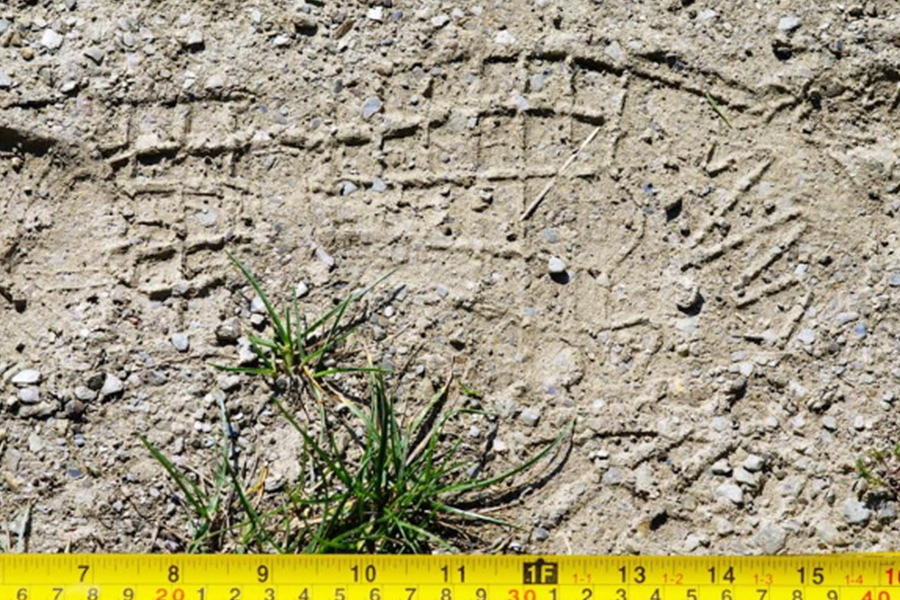The digital space has become the crime scene of the 21st century. From different types of cyberattacks to financial fraud, criminals are increasingly leaving their digital footprints across a vast and ever-evolving landscape.
This necessitates a constant evolution in the field of digital forensics, the process of collecting, analyzing, and presenting digital evidence in a legal context. Traditionally, digital forensics relied heavily on manual analysis techniques to uncover hidden files, recover deleted data, and identify user activity.
However, the explosion of data volume, the proliferation of mobile devices, and the increasing sophistication of cybercrime tactics are demanding a new wave of technological advancements.
Let’s delve into some of the emerging technologies that are revolutionizing the concept of digital forensics.
What is Digital Forensics?
In the digital age, crime scenes aren’t just physical locations anymore. Our devices and online activities leave a trail of evidence. Digital forensics is the science of uncovering and analyzing electronic evidence.
Imagine it as detective work for the digital world. Investigators use specialized tools to collect data from computers, phones, and even cloud storage. They meticulously analyze this data to recover deleted files, identify hidden activity, and reconstruct past events.
This digital evidence can be crucial for prosecuting cybercrimes, uncovering financial fraud, or even providing alibis in legal cases. As technology evolves, so too do the techniques of digital forensics, serving justice in the digital frontier.

14 New Technologies Revolutionizing the Concept of Digital Forensics
1. Artificial Intelligence (AI) and Machine Learning (ML)
The sheer volume of data that modern devices generate can be overwhelming for traditional forensic analysis methods. AI and machine learning algorithms can sift through vast datasets, identify patterns, and flag anomalies that might escape human attention.
This can significantly reduce investigation time and lead to faster identification of crucial evidence. For instance, AI can automate tasks like recognizing malware signatures, analyzing network traffic patterns, and identifying suspicious user behavior.
2. Cloud Forensics
Cloud storage has become ubiquitous, with businesses and individuals increasingly relying on cloud platforms to store data. This presents unique challenges for forensic investigations. Cloud forensics tools allow investigators to collect and analyze evidence stored in the cloud, ensuring compliance with chain of custody protocols and legal requirements.
These tools can also streamline the process of identifying and retrieving relevant data across geographically distributed cloud servers.
3. Blockchain Forensics
Blockchain technology, the foundation of cryptocurrencies, is finding applications in digital forensics. Blockchain ledgers are tamper-proof and offer an immutable record of transactions.
This immutability can help track the movement of digital assets, identify illegal activity on blockchain networks, and link criminal activity to specific digital wallets.
4. Data Visualization Tools
Presenting complex types of digital evidence clearly and concisely for a non-technical audience is crucial in court. Data visualization tools help investigators translate raw data into compelling visuals, such as timelines, network maps, and charts.
These visuals can effectively demonstrate the flow of information, identify key events, and connect the dots for judges and juries.

5. Mobile Device Forensics
Mobile devices have become an extension of ourselves, storing a wealth of personal and professional data. Mobile forensics tools specifically extract evidence from smartphones and tablets, including deleted data, app activity, and call logs.
These tools are essential for investigations involving mobile phone-related crimes like cyberstalking, financial scams, and drug trafficking, among others.
6. Automated Malware Analysis
The ever-evolving threat of malware necessitates faster and more sophisticated methods for detection and analysis.
Automated malware analysis tools utilize machine learning algorithms to identify malicious code, classify malware types, and extract forensic artifacts to identify the source of the attack and track down perpetrators.
7. Network Forensics Tools
Network forensics focuses on capturing and analyzing network traffic data to identify suspicious activity, reconstruct network events, and identify the source of cyberattacks.
Advanced network forensics tools can monitor network traffic in real-time, detect network intrusions, and help investigators understand the attacker’s methods and motives.
8. Internet of Things (IoT) Forensics
The growing number of internet-connected devices, from smartwatches to smart home appliances, creates a new frontier for digital forensics.
IoT forensics tools can help extract evidence from these devices, which can be crucial for investigations involving data breaches or cyberattacks targeting critical infrastructure.
9. Memory Forensics
Memory forensics is a specialized field focused on capturing and analyzing the volatile memory of a computer or other device. This type of forensics can reveal hidden processes, malware, and other artifacts that aren’t on the hard drive.
Memory forensics tools can help investigators reconstruct a timeline of events, identify security breaches, and even recover deleted data. This technique is particularly useful in cases where attackers have tried to cover their tracks.

10. Incident Response Automation
Digital forensics often plays a critical role in the aftermath of a cyberattack. Incident response automation tools can help streamline the process of collecting and analyzing evidence during an ongoing attack.
These tools can automate tasks like network traffic capture, log analysis, and malware identification, allowing investigators to focus on critical decision-making and containment efforts.
11. Continuous Monitoring and Forensics Readiness
The traditional approach to digital forensics often involves creating reactive measures that are helpful after the crime. However, the ever-present threat of cyberattacks necessitates a more proactive approach.
Continuous monitoring tools can help identify suspicious activity in real time, allowing investigators to intervene quickly and potentially prevent an attack from unfolding.
Additionally, a focus on forensics readiness involves implementing best practices for data collection and storage throughout an organization’s IT infrastructure, ensuring a smoother transition to forensic analysis.
12. Privacy-Enhancing Technologies
The increasing reliance on digital forensics tools raises concerns about user privacy. Privacy-enhancing technologies can help address these concerns. These technologies allow investigators to analyze digital evidence while protecting personally identifiable information (PII) or other sensitive data.
This could involve techniques like anonymization, homomorphic encryption, or differential privacy, which enable analysis without revealing the underlying content of the data.
13. Cognitive Forensics Tools
The human brain remains a powerful tool for forensic analysis. Cognitive forensics tools are emerging to bridge the gap between human intuition and digital evidence analysis.
These tools can leverage techniques like eye-tracking, facial recognition, and natural language processing to understand how investigators interact with digital evidence and identify areas that might require further scrutiny.
Providing insights into human cognitive processes during investigations allows these tools to potentially improve the accuracy and efficiency of digital forensics.
14. The Democratization of Digital Forensics Tools
Traditionally, digital forensics tools have been expensive and complex, requiring specialized training and expertise. However, the emergence of cloud-based solutions and user-friendly interfaces is making these tools more accessible.
This “democratization” of digital forensics tools could empower smaller organizations and individuals to conduct basic forensic investigations, potentially leading to faster identification and reporting of cybercrime incidents.

The Ethical Considerations of Emerging Technologies
While these new technologies offer immense potential for digital forensics, addressing ethical considerations is crucial. For instance, the use of AI algorithms in forensic analysis raises concerns about bias and the potential for misinterpretation.
Additionally, balancing the increasing power of forensic tools with the right to privacy is paramount. Ongoing discussions and the development of ethical frameworks are crucial to utilizing these advancements responsibly and ethically.
The Growing Importance of Counter-Forensics Techniques
As digital forensics tools become more sophisticated, cybercriminals are increasingly adopting counter-forensics techniques to conceal their activities. These techniques can involve data encryption, deletion tools, and manipulating timestamps to impede investigations.
Digital forensics professionals need to stay ahead of these evolving counter-forensics tactics by continuously developing new detection methods and forensic techniques. This ongoing arms race between investigators and criminals highlights the importance of ongoing research and development in the field.
The Human Element: The Irreplaceable Role of the Investigator
While technology plays an increasingly crucial role in digital forensics, it’s vital to remember that the human element remains irreplaceable. Investigators bring their expertise, critical thinking skills, and understanding of human behavior to the analysis process.
New technologies can empower investigators by automating tedious tasks and providing deeper insights into digital evidence, but the final interpretation and decision-making regarding the significance of evidence ultimately lies with the human investigator.
The Need for Standardization and Training
As the digital forensics landscape evolves rapidly, the need for standardization and training becomes paramount. Standardized protocols for evidence collection, analysis, and reporting ensure consistency and accuracy across investigations.
Additionally, ongoing training programs are crucial for investigators to stay abreast of the latest technologies and counter-forensics techniques criminals employ.
Collaboration between professional organizations, technology companies, and law enforcement agencies can foster the development of these standardized practices and training programs.

The Evolving Role of Law Enforcement
Law enforcement agencies are increasingly facing challenges in keeping up with the sophistication of cybercrime. Digital forensics plays a critical role in equipping them with the tools and techniques necessary for effective investigations.
However, the evolving digital landscape necessitates a shift in how law enforcement approaches digital forensics. This could involve:
Building partnerships with technology companies: Collaboration with tech giants is crucial for gaining access to encrypted data and understanding the inner workings of emerging technologies.
Developing specialized cybercrime units: Dedicated units with expertise in digital forensics and cybercrime investigation can significantly enhance law enforcement’s capabilities.
Investing in training and resources: Ongoing training programs ensure that law enforcement personnel can handle the complexities of digital forensics investigations.
The Global Landscape of Digital Forensics
Cybercrime is a global phenomenon, and digital forensics investigations often transcend national borders. This necessitates international cooperation and collaboration between law enforcement agencies across different countries.
Mutual legal assistance treaties and standardized procedures for evidence sharing are crucial for conducting effective cross-border investigations. Additionally, international organizations can play a vital role in fostering collaboration and knowledge sharing among different countries in the field of digital forensics.
The Future of Digital Forensics: A Collaborative Approach
These emerging technologies are transforming the landscape of digital forensics. Collaboration between law enforcement agencies, forensic investigators, and technology companies is crucial to utilize these advancements effectively.
Additionally, ongoing research and development is crucial to keep pace with the ever-evolving digital landscape and the creativity of cybercriminals. We can ensure that digital forensics remains a powerful tool in the fight against cybercrime and the pursuit of justice by embracing these new technologies and fostering a collaborative approach.
Unlock the Future of Digital Forensics with Eclipse Forensics!
Ready to harness the latest advancements in digital forensic services? Eclipse Forensics offers state-of-the-art tools and expert services to help you stay ahead in the ever-evolving world of cyber investigations.
Whether you’re battling complex cloud data, diving into mobile device forensics, or tracking blockchain transactions, their team of digital forensic experts provides fast, reliable, and comprehensive results.
Join the cutting-edge forensic technology—contact the cyber forensic experts at Eclipse Forensics today to discuss your specific needs and find out how they can empower your investigations. Solve cases faster and smarter together with the best!


